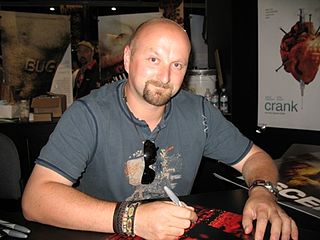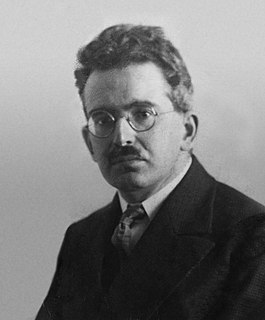A Quote by Martin Filler
Although prefabrication has a long history - the ancient Romans shipped pre-cut stone columns, pediments, and other architectural elements to their colonies in North Africa, where the numbered parts were reassembled into temples - the idea took on a new impetus with the technological advances of the Industrial Revolution.
Related Quotes
When the industrial revolution happened there was the Luddistic movement, and there was a fear that machinery would replace all the labor. Whenever we had a technological revolution we had this fear. So if you look backwards, these fears were not justified, and I think they were driven by our very human inability to visualize what new jobs will be created by this new technology.
I don't. We've had three technological revolutions that have changed the course of human history, all driven by physics. In the first, the industrial revolution, physicists developed Newtonian mechanics and thermodynamics, which gave us the steam engine and machine power. The second technological revolution was the electricity revolution. That gave us radio, television, and telecommunications. Then, physicists developed the laser and the transistor.
I am grateful to the fossil fuel industry for bringing us the concentrated carbon that took us through the Industrial Revolution and through the technological revolution and brought us to the gateway of the renewable energy revolution, or what I call the sunlight revolution. But that is where we must part ways. It's the natural order.
Roman history was kind of unavoidable where I was growing up. It was everywhere - all the place names and ruins and forts. My dad's a history buff, and I spent a lot of time on Hadrian's Wall. I became fascinated by the idea of what was so terrifying up there that the Romans built a 60-mile long, 30ft high stone wall to keep it out?
Livestock adopted in Africa were Eurasian species that came in from the north. Africa's long axis, like that of the Americas, is north/south rather than east/west. Those Eurasian domestic mammals spread southward very slowly in Africa, because they had to adapt to different climate zones and different animal diseases.
The history of lead is a history of neglect. It's a history of decisions on our part not to address the broad implications of what we did to ourselves during the industrial revolution and in the first part of the century when our cities expanded broadly, when we built our housing and we began to depend upon lead as a mainstay of our new industrial culture. We put this stuff in even though we knew it was dangerous, we knew it was going to hurt kids.
The world has changed far more in the past 100 years than in any other century in history. The reason is not political or economic but technological-technologies that flowed directly from advances in basic science. Clearly, no scientist better represents those advances than Albert Einstein: TIME's Person of the Century.
The sea erupted. Often the sea and land changed places. The immobility of contours of continents and seas, a dogma in geology, has no basis in fact. And immediately there is the problem of the climate. There were ancient climates that were very different from what they are today. If those corals grew where they were found, certainly the Earth was not travelling with the same elements of rotation and revolution which means not in the same orbit, not with the axis directed in the same position as it is today. If you don't believe it, try to conservate corals on the North Pole.



































